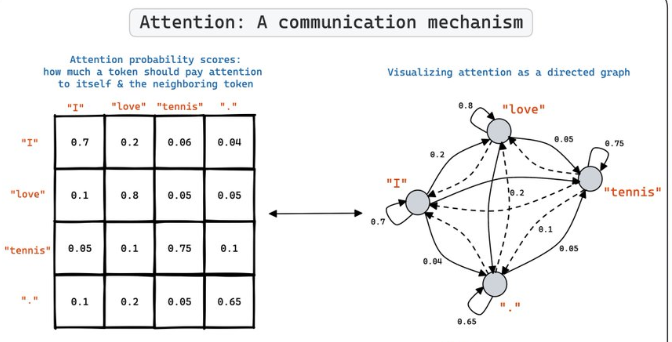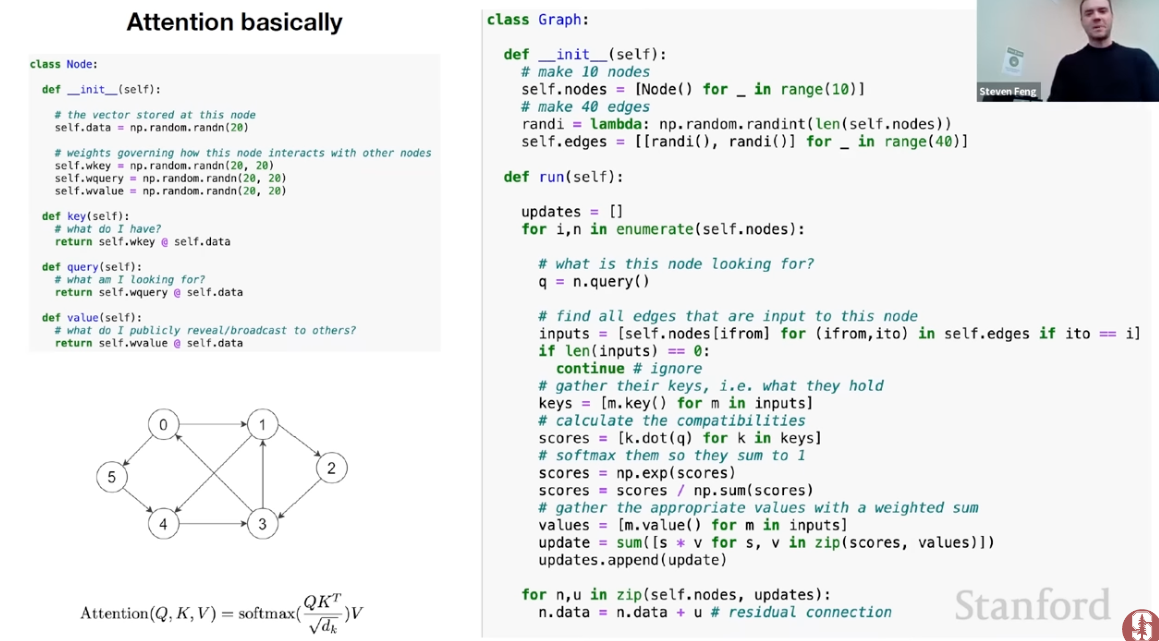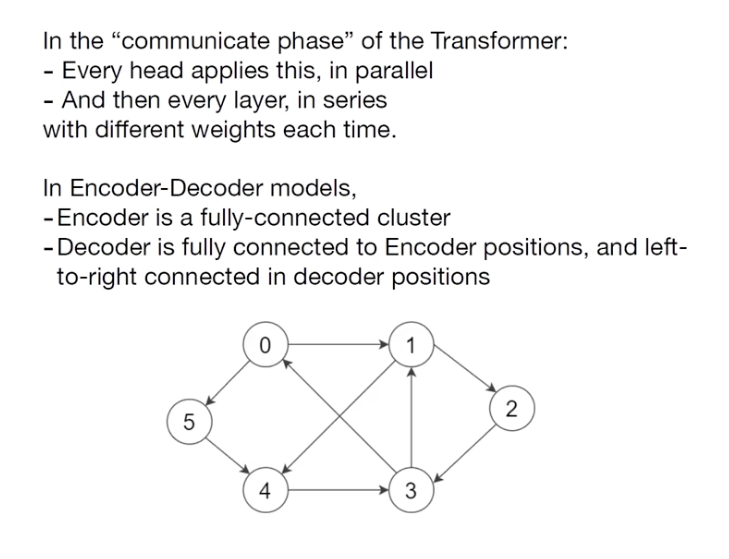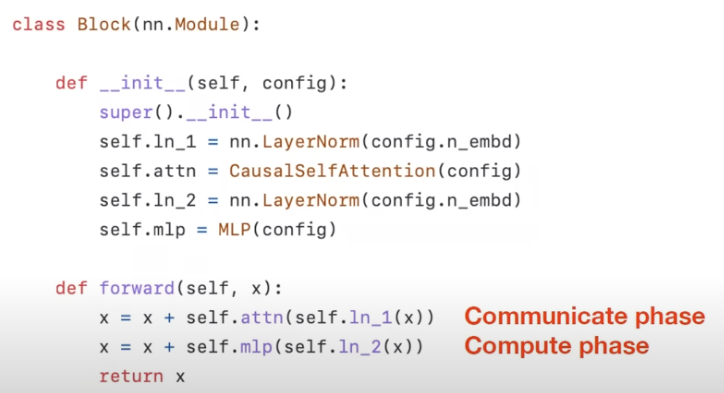Source
-
X/Twitter: Akshay https://twitter.com/akshay_pachaar/status/1728028273010188483
-
https://www.youtube.com/watch?v=XfpMkf4rD6E&t=1395s&ab_channel=StanfordOnline
Takeaway
Karpathy 有幾個 key concept 非常好!
- Attention 是 token to token communication, FFC/MLP 是每個 token 内部的 computation.
- LLM 的參數,原理上就是 (lossy) compression (所以服從 Shannon Information Theory?)

Attention Matrix as a Graph
下圖是 “I love tennis.” 的 attention matrix. 可以詮釋成 Directed Graph 如下圖。但是並非常見的 Directed Acyclic Graph (DAG).
這有什麽用嗎?
- Markov matrix, 類似 transition probability matrix. 代表每個 token 和 自己以及其他 tokens 的 transition probability?
- 只有 forward direction 有用? 有實務上的用途嗎? 是否可以用來計算 perplexity?

Perplexity of a fixed-length large language model

以上式來看,log 的 summation and average 對應是機率倒數的幾何平均值!不是 entropy 的單位。
-
PPL 内部的條件機率: \(p(x_1) p(x_2\|x_1) p(x_3\|x_2,x_1) p(x_4\|x_3,x_2,x_1)\cdots p(x_t \| x_{t-1},\cdots x_1) = p(x_1) \frac{p(x_1,x_2)}{p(x_1)} \frac{p(x_3,x_2,x_1)}{p(x_1,x_2)} \cdots = p(x_1, x_2, ... x_t)\)
- 接下來 exp 和 log 互相抵銷,PPL 是條件機率的幾何平均值的倒數 = $\sqrt[t]{p(x_1,\cdots,x_t)^{-1}}$. 因此 PPL 的最小值是 1. 對應所有條件機率 = 1. 當然實務上機率必然小於 1, 所以倒數大於 1. 除非 joint distribution 是 delta function,不然 PPL 一定大於 1. 如果 joint distribution 的 entropy 越大, PPL 就越大。
- 這個 attention or transition probability 好像只有 forward pass 有用,不能 backward ?
Attention 的來源
- 先把 input words 轉換成 tokens. 這是一個 trade-off between vocab_size 和 token length.
- 如果使用很小的 vocab_size, 例如 English characters (vocab_size < 100), 會造成很長的 token lengths. 這會產生非常大的 attention matrix, 造成大量的 communication and computation burden.
- 反之使用很大的 vocab_size, 例如所有的 English words (vocab_size > 10000), 雖然 token length 很短,但是缺少 communication between tokens, 會造成準確性下降?
- 再把 token maps to embedding,也就是 vectors.
- 再來就是有名的 K, Q (, and V) vectors. 其中 K, Q 用來計算 K, Q matrix, 也就是 attention matrix. 也就是不同 token 之間的 transition probability.
- 接下來是產生 output embedding (token), 就是把 attention matrix 乘以 V vector.

Self attention is a communication mechanism
Query: 我要找這個 information
Key: 我有這個 information
Value:
Language model
Self-attention: Q and K are the same (所以 matrix 是 symmetric? no); V is also the same.
Cross-attention: Q, K from encoder, V from decoder?
Recommendation System
Q is target? K, V 對應 user profile and product profile?


二階段: communication and computation

Appendix
Hugging Face Perplexity Example
使用 GPT-2 ($n_{ctx} = 1024$) 計算 perplexity.
這裏使用 Hugging face 的 GPT2 和 WikiText dataset. 要事先 install 以下 packages.
1 | |
1 | |
我們用 WikiText-2 dataset 評估 PPL.
1 | |
1 | |
最後 ppl = 16.45.